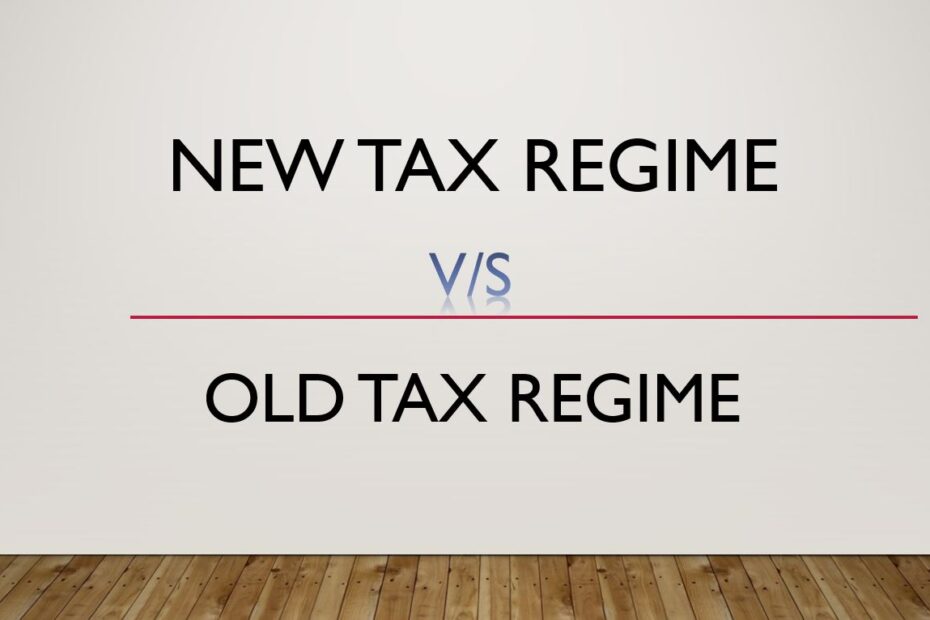The Indian tax system underwent a significant transformation with the introduction of the new tax regime in Budget 2020. This new regime offers lower tax rates but comes with the trade-off of foregoing many exemptions and deductions available under the old regime. This guide aims to help you understand the differences between the two regimes and make an informed decision on which one suits you best.
1. Overview of the Tax Regimes
Old Tax Regime: The old tax regime allows taxpayers to claim various exemptions and deductions, such as House Rent Allowance (HRA), Leave Travel Allowance (LTA), and deductions under sections like 80C, 80D, and 24(b). This regime is beneficial for those who have significant investments and expenses that qualify for these deductions.
New Tax Regime: The new tax regime offers lower tax rates but does not allow most of the exemptions and deductions available under the old regime. It is designed to simplify the tax filing process and is beneficial for those with minimal investments and expenses.
2. Tax Slabs Comparison
The tax slabs under both regimes differ significantly. Here’s a comparison:
Old Tax Regime:
- Up to ₹2.5 lakh: Nil
- ₹2.5 lakh – ₹5 lakh: 5%
- ₹5 lakh – ₹10 lakh: 20%
- Above ₹10 lakh: 30%
New Tax Regime (Post-Budget 2024):
- Up to ₹3 lakh: Nil
- ₹3 lakh – ₹6 lakh: 5%
- ₹6 lakh – ₹9 lakh: 10%
- ₹9 lakh – ₹12 lakh: 15%
- ₹12 lakh – ₹15 lakh: 20%
- Above ₹15 lakh: 30%
3. Key Features and Benefits
Old Tax Regime:
- Deductions and Exemptions: Allows various deductions under sections 80C (up to ₹1.5 lakh), 80D (health insurance premiums), 24(b) (home loan interest), and more.
- Tax Planning: Encourages savings and investments through tax-saving instruments like PPF, ELSS, and NSC.
- Flexibility: Suitable for individuals with significant eligible expenses and investments.
New Tax Regime:
- Simplified Tax Filing: Lower tax rates and fewer deductions simplify the tax filing process.
- Higher Tax Rebate: Full tax rebate on income up to ₹7 lakh, compared to ₹5 lakh under the old regime
- Standard Deduction: A standard deduction of ₹75,000 is available
- Reduced Paperwork: Less documentation required due to fewer deductions and exemptions.
4. Choosing the Right Regime
The choice between the old and new tax regimes depends on individual financial situations. Here are some scenarios to consider:
When to Opt for the Old Tax Regime:
- If you have significant investments in tax-saving instruments.
- If you pay high premiums for health insurance.
- If you have a home loan and can claim interest deductions.
- If you can claim substantial exemptions like HRA and LTA.
When to Opt for the New Tax Regime:
- If you have minimal investments and expenses.
- If you prefer a simplified tax filing process.
- If your income is up to ₹7 lakh, as you can benefit from the full tax rebate.
- If you do not want to maintain extensive documentation for deductions.
5. Practical Tips for Tax Planning
- Evaluate Both Regimes: Calculate your tax liability under both regimes to see which one offers better savings.
- Plan Investments Wisely: If opting for the old regime, invest in tax-saving instruments early in the financial year.
- Keep Updated: Stay informed about any changes in tax laws and regulations that may affect your choice.
- Consult a Tax Professional: Seek advice from a tax consultant to make an informed decision based on your financial situation.
6. Conclusion
Understanding the differences between the old and new tax regimes is crucial for effective tax planning. While the old regime offers various deductions and exemptions, the new regime simplifies the process with lower tax rates. By evaluating your financial situation and tax liability under both regimes, you can make an informed decision that maximizes your tax savings.
Happy tax planning!
